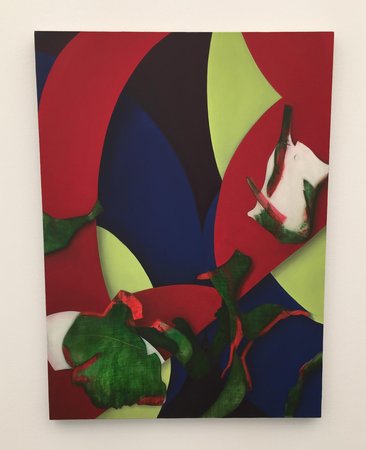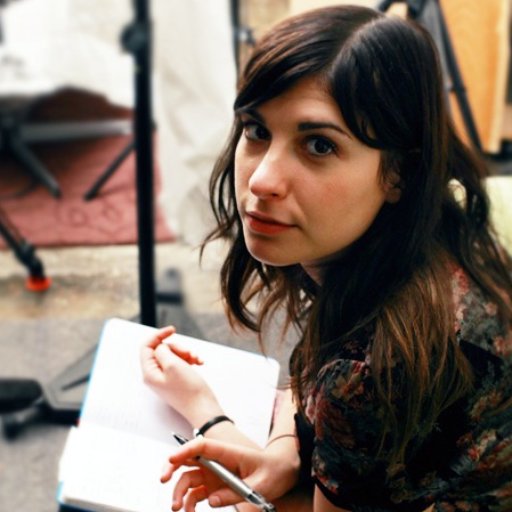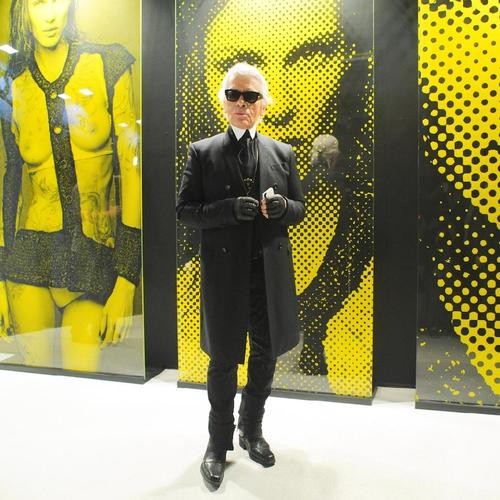Last week the vernissage of the Venice Biennale gave us a harrowing look into the inequities visited upon our global community, the ones that haunt us from the past, pervade our present, and stretch ominously into the future. Some art-worlders might be a bit glum, maybe even turning over troubling thoughts about a world that serves up $179 million Picassos to a growing pool of astonishingly wealthy uber-elites. But don’t despair—Frieze New York has come to the rescue. With paintings!
Paintings galore spill over in the aisles of this year’s fair, beautiful little puppies begging to be taken home where they’ll give endless pleasure and won’t judge. After all, who doesn’t really, at the end of the day, love a nice painting? Here are a few primo examples to look out for at the fair.
Lesley Vance
David Kordansky
Untitled paintings
$40,000-$60,000

One of Kordansky’s original artists—he met her at CalArts—Vance has for eight years or so been making these abstract paintings that are purely ‘about’ the laying down of colored paint, luxuriating in the texture of the materials and tricking the eye into seeing an oozing, breathing mass of interchangeable dimensions. Vance only makes a dozen of these per year, and the care is visible in the opulent surfaces.
Ryan McLaughlin
Geisel, 2015
Laurel Gitlen
Paintings are $7,000-$20,000
Based in Berlin, McLaughlin draws on the hermetic stylings of Jasper Johns to create paintings that fuse that living legend’s trademark grisaille with slightly-obscured signs from the world at large. The result lies somewhere between an abstraction and a still life. This painting references the insignia for a medical school at Dartmouth, but it’s so built-up and scratched-down through the artist’s time-intensive process that the logo is transformed into the ghost of a sign.
Rudolf Stingel
Untitled, 2015
Massimo De Carlo
$800,000
Stingel’s carpet paintings are simply irresistible. Forthrightly decorative—what is a carpet if not decor—they’re also spooky meditations on the attritive passage of time that grinds us all down to threadbare tatters, much like a too-well-trod Persian rug. This one came directly from the studio, and may recall the artist’s bravura 2013 Palazzo Grassi show, where red carpets swaddled the space in a tomblike memorial for his late friend Franz West.
Loredana Sperini
Untitled, 2015
Freymond-Guth Fine Arts
$5,200

This 44-year-old Italian artist who lives in Switzerland makes painting objects that you just want to caress with your eye, so haptic they are in their melange of materials and colors. Here’s what she does: she takes wax (black or colored) and casts it together with concrete to create dense, modestly sized slabs. Then she paints them over with layers of jewel-toned encaustic. Explorations of ancient techniques, these paintings are a bit bulky but small and highly desirable—kind of like that ideal chunky accessory everyone’s in search of, but meant for the wall.
Dan McCarthy
1975 Little Cortez, 2014
Anton Kern
$12,000 together
Purposefully a bit messy and made with speed and verve, the paintings of Dan McCarthy can look like they’ve been left out in the rain a bit; their colors seem to melt into a seductive state of evanescence. The artist prefers not to have too much control over the finished state of his compositions, leaving that fussbudgeting to more polished painters, and the effect is one of sprezzatura—particularly when it comes to his lyrical rainbow compositions, which he’s been doing for a few years now (and which—collectors take note—look sensational above a doorway). This one, positioned above a slew of his ceramic works (which are extensions of his painterly approach), has been paired with a solitary rainbow-colored raindrop for extra fun.
Irma Blank
Ur-schrift ovvero Avant-testo, 1998
$110,000 apiece
Alison Jacques Gallery

The 80 year-old Milan-based artist with the Dickensian name of Irma Blank begins with an empty canvas, and then slowly covers the surface with a near-infinitude of loping lines (executed with whatever pens she has lying around her studio). The finished composition conveys a light, cloud-like volume, and the edges reveal the process—it’s only there that one sees the individual lines snaking out, like unruly hairs. In the back room, the gallery also had a small blue composition—roughly five inches square—that gives off an almost electrical energy. Touch it and you might get zapped.
Kasper Bosmans
“Legend” paintings
Marc Foxx
€8,500 for all six
These paintings-on-board by the young Belgian Kasper Bosmans are candy for both the eye and the intellect, telling abstruse stories about the artist’s working methods in an allusive way that draws equally upon poetry and the graphic novel. Here a narrative unfolds from the top left, describing how the artist makes smoke paintings by burning flowers; he gets the blooms from his friends and then gives to his mother (who dries them). It’s a sweet gesture, but Bosmans also pictures other things that can be burnt (including, in a potentially macabre note, a Buddha). The series ends with a cute description of how to make egg tempera and an aside about the history of milk-cow production in Belgium.
Viktor Kopp
A and B, 2015
$16,000 apiece
Bureau
Catercorner to Laurel Gitlen’s booth but at the far opposite of the fair, the paintings of Viktor Kopp also invoke the legacy of Jasper Johns—in particular his map paintings, the brushy splotches of False Start, and his number paintings. Instead of numbers, however, Kopp gives us letters positioned backwards on canvases next to one another—offering collectors a classic A-B decision test. But who can decide? Just take both.
Gabriele De Santis
Frutta and Limoncello

Spotted while I was speeding out the door, this painting was too irresistible not to write about. For one thing, shouldn’t all paintings come with handlebars, if only for safety’s sake? For another thing, how clever is it of De Santis to reimagine the motley of Picasso’s Rose Period harlequins as spandex cycling gear and to marry that leap of thought to the Modern master’s famous handlebar toro? Olé!
Korakrit Arunandonchai
denim massage chairs (growing up together), 2015
Frieze Projects

“What I dream of is an art of balance, of purity and serenity, devoid of troubling or disturbing subject matter, an art which could be for every mental worker, for the businessman was well as the man of letters, for example, a soothing, calming influence on the mind, something like a good armchair which provides relaxation from physical fatigue.” So said Matisse. To which Korakrit Arunandonchai said, “Forget armchairs—let’s get Sharper Image on this.” He brought in high-tech massage chairs, painted them in his signature palette of fiery oranges and yellows and cooling blues, and laid one out on a tarp of his signature color-saturated bleached denim. Outside the fair, the weary mental workers shopping at Frieze get one last chance to enjoy a quick hit of relaxation.



























